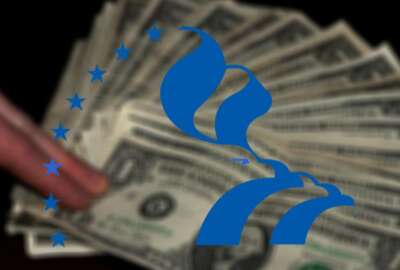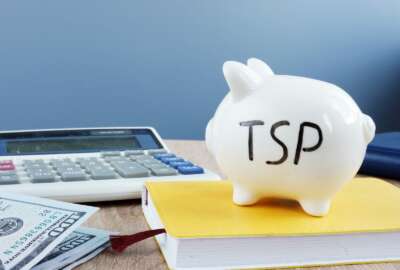
What’s your TSP investment style, automatic pilot or active control?
Most of the 34,000 active and retired feds with million-dollar-plus Thrift Savings Plan accounts got there by keeping cool. Most have been steady investors for...
Alan Roth, columnist for the AARP The Magazine, is a nationally-known (CBS NewsWatch, The Wall Street Journal) financial adviser. His motto is “dare to be dull.”
His point is that when it comes to investing don’t get overly emotional. Many experts agree.
Most of the 34,000 active and retired feds with million-dollar-plus Thrift Savings Plan accounts got there by keeping cool. Most have been steady investors for decades. Most stuck with the stock-indexed funds through good times and bad. They didn’t and still don’t panic when the market takes a short- or long-term nosedive. Their profile is that of long-term investors, people who ignore the ups and downs of the stock market. During the Great Recession most of them continued that buy-and-hold strategy. They saw their accounts drop dramatically, then rocket ahead as the market started coming back around March 9, 2009 — big time.
Most are still staying the course despite growing fears that record-long, 10-year bull market is due for a major correction, or maybe a lot of jaw-dropping corrections.
But there are a number of people, including several thousand Thrift Savings Plan investors, who actively manage their accounts. They follow the buy low, sell high rule. The trick, of course, is knowing when to exit the stock market — and even more importantly when to return. Some investors who left the C, S and I funds for the safety of the low-yield treasury securities G fund missed the stock market’s record climb out of the 2008-2009 Great Recession. Many are still in the G fund. Others are concerned that the 10-year bull market is long overdue for a major correction of 20 to 30 percent or more.
Last week a reader, Courtney D., asked which path she should follow. That prompted this response from a fed who retired to Hawaii following a long career with Uncle Sam and a lot of success in actively managing his TSP account. Here’s what he said:
“I write today in response to Courtney D.’s appeal today in your column regarding how to optimize the growth of her TSP balance over coming decades. To that, I can offer my method for building my TSP fortunes in fits and bounds, even through many years when I was unable to contribute more than 5%.
“Essentially, I view my investment strategy in the TSP much like the conduct of a baseball game, in which I am the outfielder. An outfielder spends a lot of time waiting and watching. His only chance to shine is when something generally spectacular happens, like a pop-fly or long grounder. As long as the batters get balls or strikes or infield hits, the outfielder has no chance to prove himself.
Related Stories
“At this moment of excitement, when the ball is in the air and the bright sunshine might cause me to flinch, I often see my fortunes drop for a day or a week or even month, as the market drops further or hits a low, then drifts sideways. However, I rarely have to wait more than a few weeks before the market rebounds, either gradually or quickly, to previous levels and charges toward record highs. As the market soars, and this is reliably nearly always the case in these situations, my TSP balance floats high as well. When it reaches a level with which I am comfortable, and this can be 2%-10% above my previous balance, I pull the trigger and shift back to the G fund, where I watch and wait while standing on safe ground. I have been able to make this shift from G to C and back to G again about three times per year on average for the past seven years, and I have watched my balance nearly quadruple in value — increasing almost $70,000 per year, on average.
“It means I have been able to buy stocks near their lows and sell them near their highs, though never at their lowest or highest, but that is fine with me. I’m not greedy, just focused on the long-term upward trend. The worst that has happened is that I have missed a few upward opportunities — what I refer to as “elevators” — but I know there will always be the next a-periodic, [cyclical] opportunity coming eventually. I never sit with stocks riding out the troughs. It is not too bold for me to predict that I’ll be a TSP millionaire by the time of my retirement in just over three years.
“I know your TSP experts take a dim view of my strategy and practice, but it’s a method that works, as long as I don’t get emotional about TSP money.” — Mark in Honolulu
Nearly Useless Factoid
By Amelia Brust
Twenty-eight years ago today the first outdoor game between two NHL teams was held in the desert. The Los Angeles Kings and the New York Rangers faced off in an official pre-season match-up in the parking lot of Caesars Palace in Las Vegas. Keeping the ice cool in 95-degree heat required three times as much coolant as a standard NHL rink, and during the game grasshoppers began to jump onto the ice — where they would either freeze or drown. Nevertheless, nearly 14,000 fans watched the Kings defeat the Rangers 5–2.
Source: Wikipedia
Copyright © 2025 Federal News Network. All rights reserved. This website is not intended for users located within the European Economic Area.
Mike Causey is senior correspondent for Federal News Network and writes his daily Federal Report column on federal employees’ pay, benefits and retirement.
Follow @mcauseyWFED





